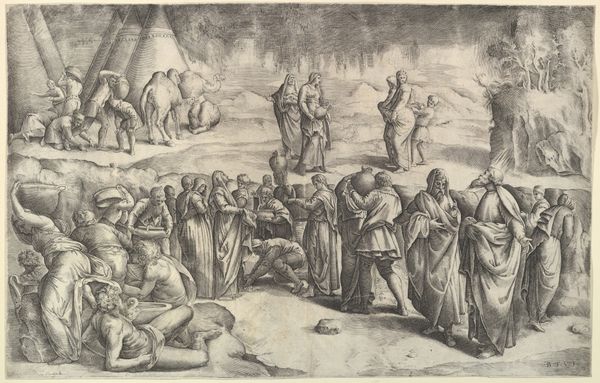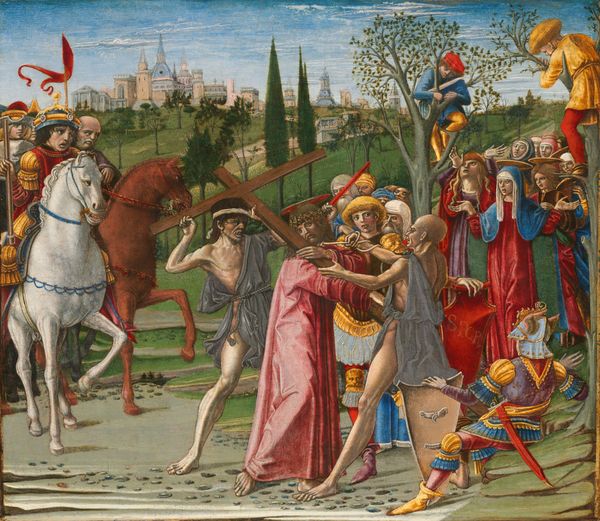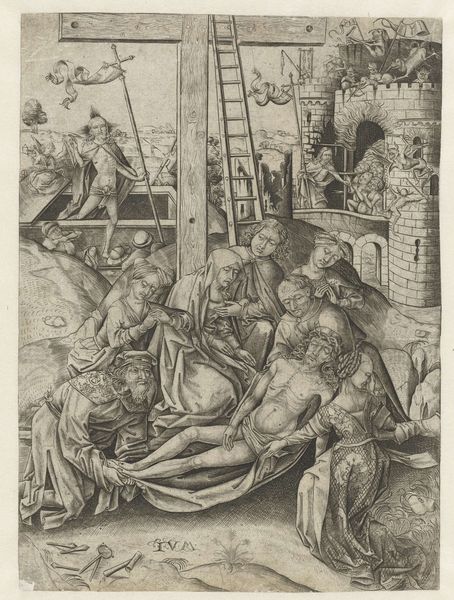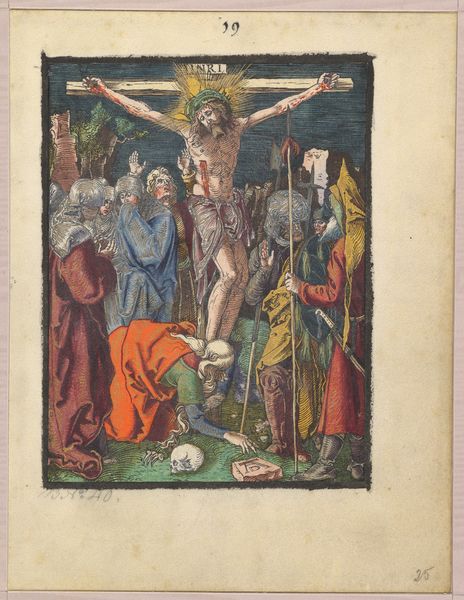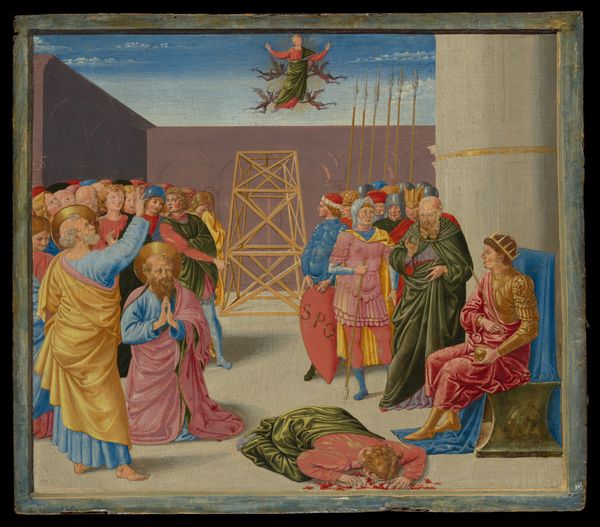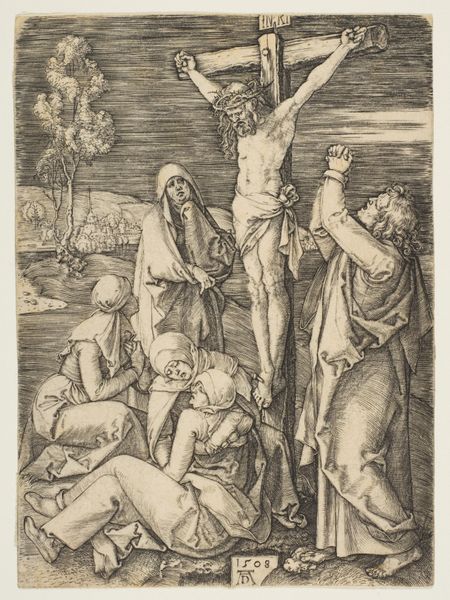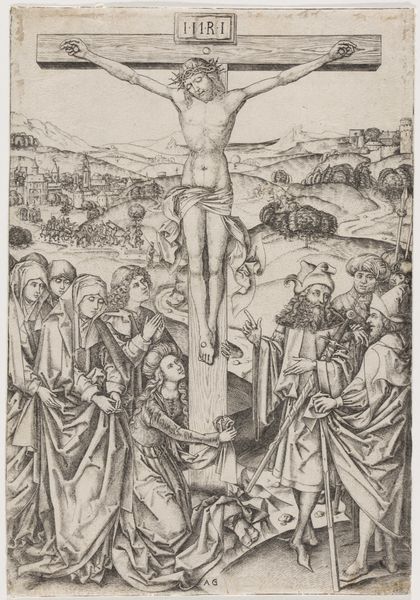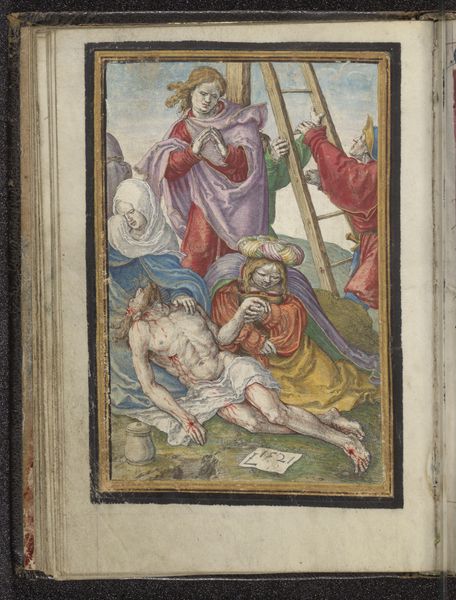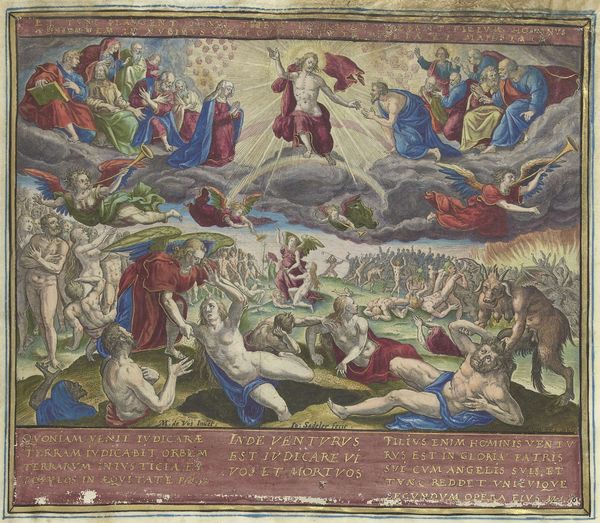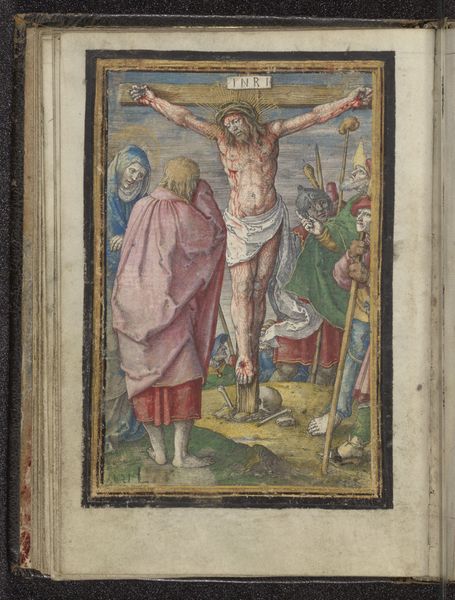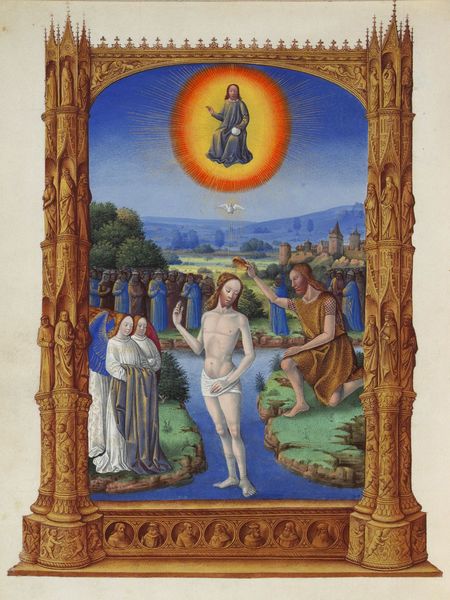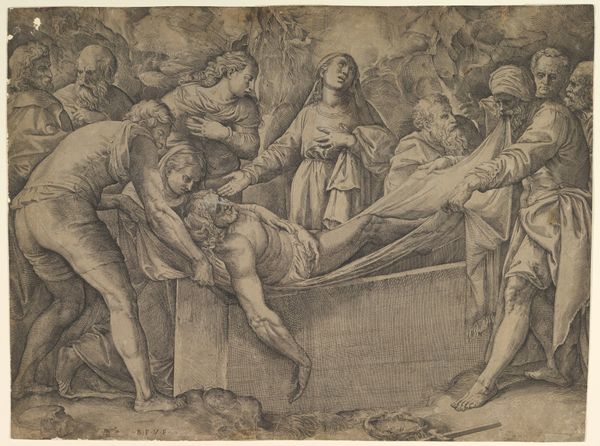
print, engraving
# print
#
landscape
#
mannerism
#
figuration
#
history-painting
#
engraving
Dimensions: height 202 mm, width 234 mm, height 537 mm, width 372 mm
Copyright: Rijks Museum: Open Domain
Curator: Here we have Johann Sadeler I’s “Bewening van Christus,” or "Lamentation of Christ," an engraving dating back to 1579, now residing here at the Rijksmuseum. It's quite small but incredibly detailed. Editor: My first thought? What a profoundly somber scene. The weight of grief hangs heavy in the air. There is almost a claustrophobic atmosphere as the landscape competes for space behind the figures. Curator: Sadeler, deeply entrenched in the Mannerist style, utilizes complex figuration to emphasize emotional intensity. Consider how Christ's body is positioned, almost collapsing from the frame’s lower left. It creates a visual pathway guiding our eye through each mourner’s anguished pose. Editor: It's interesting you mention that the artist uses mannerism as a form of dramatic effect. I would go further and state how its very stylized composition pulls from common theater formats, emphasizing exaggerated and almost artificial displays of sadness or pain. Look at how there are theatrical props; for example, we are provided items to clean Jesus. It looks more like putting makeup than an offering, especially regarding the color choices. Curator: Precisely. And the landscape serves more than just a backdrop. Sadeler intertwines history painting with a distinct landscape style. Notice the city in the distance and the sharp elevation of the rocky surface to the right? Editor: They give the impression of being from an utterly fictional location. There are common religious and thematic scenes throughout, but its real point and goal are the production of a unique location where viewers from across Europe may be impressed. The image almost seeks to conjure, through memory, a sort of sublime sadness for all of mankind to understand in unison. Curator: This piece resonates on a social level as well. Prints, like this engraving, allowed for the wide dissemination of religious imagery, impacting devotional practices across different societal classes. Sadeler, through printmaking, shaped visual culture and provided access to emotionally charged, spiritual narratives. Editor: Thinking about the social and historical impacts always alters my perspective; considering the artist’s intent to shape European history gives an important and complex appreciation for religious and aesthetic practices.
Comments
No comments
Be the first to comment and join the conversation on the ultimate creative platform.
